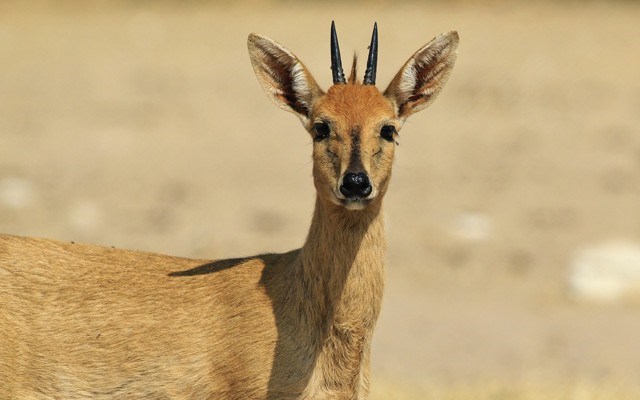Spring is just around the corner, I swear. I mean, it's got to be somewhere nearby, doesn't it? what with the annual "spring forward" adjustment of our clocks this coming Sunday.
Another indicator: I can feel us all finally surfacing from this long, drawn-out winter, planning friendly dinner parties or lunch for that old friend who's been hibernating, too. So to keep the conversation flowing as much as the good food and drink, here's an up-to-date instalment of some of the best food facts floating around out there, with apologies to Harper's Magazine.
Rank of Brazil in terms of world orange juice exports: No. 1.
Historical average of number of boxes of Brazilian oranges needed to produce one ton of concentrated orange juice: 250.
Number of boxes needed last year in Brazil with the spread of citrus greening disease, which has caused growers to seek new growing areas where more irrigation is needed, producing watery oranges: 289.
Rank of Florida in terms of world orange juice exports: No. 2.
Number of years since Florida, which also suffers citrus greening disease, has had as small an orange juice crop as is predicted for 2017: 50.
Percentage increase in value of world orange juice futures in 2016: 23.
Percentage of people's protein intake that bushmeat accounts for in central Africa: 80.
Number of tons of bushmeat extracted from the Congo Basin each year: 6 million, or nearly the same as Brazil's annual beef production, largely in the form of porcupines, pouched rats and duikers (small antelopes).
Amount of forestland needed to be cleared for pastureland in the Congo Basin to produce the same amount of protein from cattle: 25 million hectares, or an area about the size of Great Britain.
Average weight of a pouched rat, which really isn't a rat: 1 to 1.4 kilograms.
Average weight range of a duiker: 3.5 to 9 kg for smaller species to 45 to 80 kg for larger ones.
Average weight range of mule deer does found in B.C.: 45 to 70 kg.
Percentage of Canadians opposed to hunting animals for sport: 88.
Percentage of Canadians in favour of hunting animals for meat: 68.
Number of hunting licences sold to B.C. residents in the 1981-82 season: 174,000.
Number sold to B.C. residents in 2012: 97,000.
Number of odorous-substance molecules found in one millilitre of air: About 6,000.
Number of odorous-substance molecules found in one ml of water: About 1,800.
Number of taste buds that can be found on the skin of a catfish: An average of 100,000 to 150,000 but as many as 250,000.
A parrot: About 400.
Number of taste buds the average person has: About 10,000, which are grouped by theme: sweet at the tip of the tongue; bitter at the back; sour at the sides; salt all over the surface but mainly at the front.
Number of parts per million when people can detect sweetness: 1 in 200.
Saltiness: 1 in 400.
Sourness: 1 in 130,000.
Bitterness: 1 in 2,000,000.
Number of days our taste buds last: About seven to 10.
Age when we start to not to replace our taste buds as frequently: 45 years old.
Average amount of chicken DNA found during a CBC Marketplace analysis of Subway oven roasted chicken and chicken strips, respectively: 53.6 per cent and 42.8 per cent, respectively.
Average amount of chicken DNA found in the chicken in A&W's Chicken Grill Deluxe: 89.4 per cent.
Total number of different ingredients found in all the chicken tested: 50.
Increased sodium levels found in the chicken samples: seven to 10 times higher than that of "unadulterated chicken."
Number of edible plants on Earth: About 20,000.
Number of edible plants giant pandas depend on: One — bamboo, although they will also eat other plants such as irises, crocuses, gentians, and tufted grasses, and occasionally hunt fish, pikas and small rodents.
Number of edible plants koalas depend on: One — eucalyptus, which causes them to smell of eucalyptus, although they will also eat mistletoe and box leaves.
Rank of Indonesia in world palm oil production: No. 1 (33 million tons in 2016).
Rank of palm oil worldwide in terms of vegetable oils used on the planet: No. 1.
Ratio of packaged goods in your average grocery store that palm oil is found in: About half.
Ratio of native animal species that can survive the transition from rainforest to palm oil plantation: 15 per cent.
Rank of scrambled eggs as preferred food of garbage rats in New York City: First.
Rank of raw beets: Last.
Sources: Bloomberg.com; Insights West Market Research; Centre for International Forestry Research; Grizmek's Encyclopedia of Ethology; New World Encyclopedia.org; Live Science.com; CBC.ca; A Natural History of the Senses; Walker's Mammals of the World, Volume 1; Union of Concerned Scientists.org; World Wildlife Fund.org; Wild Safe B.C.com; Rats: Observations on the History and Habitat of the City's Most Unwanted Inhabitants
Glenda Bartosh is an award-winning journalist who never lets anything get in the way of a good fact.




